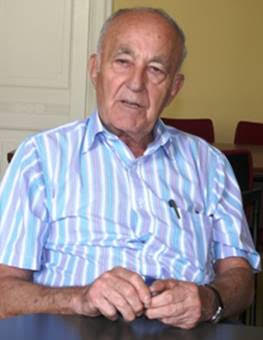
THE VOICE OF INTERNATIONAL LITHUANIA
|
VilNews has its own Google archive! Type a word in the above search box to find any article.
You can also follow us on Facebook. We have two different pages. Click to open and join.
|
Travel Lithuania!
By Tanushree Poddar, Deccan Chronicle, South India
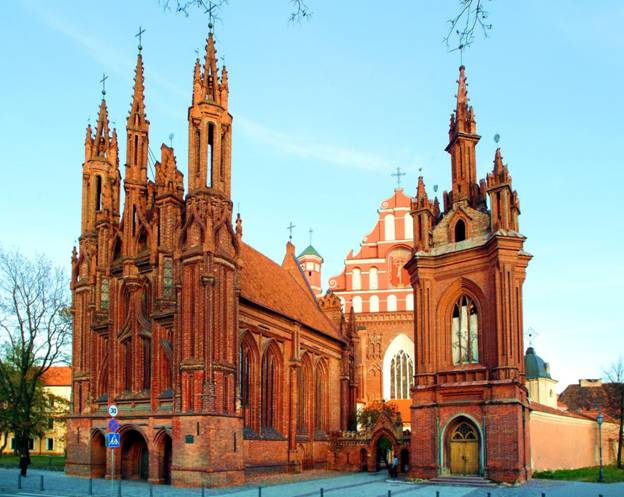
St. Anne’s Church in Vilnius.
Photo: www.travel.lt
When Napoleon saw this church, he wanted to carry it away with him on the palm of his hand and gift it to his sweetheart, Josephine,” our guide informed us with a twinkle in her eyes. “Thankfully, he could not fulfill his wishes and the church still remains in Vilnius.” I was not surprised.
I would have liked to carry the stunning church home, too. St. Anne’s church evokes covetousness in all breasts. It is so beautiful. Vilnius, the capital of Lithuania, is an artist’s dream. With its emerald forests, cobalt lakes, cerise spires and pine scented air, it is a romantic paradise. Apart from lovely landscape, it has some of the most beautiful churches I have ever seen.
Read more at:
http://www.deccanchronicle.com/tabloid/sunday-chronicle/travel/romantic-paradise-187
The Deccan Chronicle is a daily newspaper published through the Andhra Pradesh, Karnataka, and Tamil Nadu states of India. It is published in English, and is the largest circulation English-language newspaper in the south of India. The newspaper's name derives from the originating place Deccan regions of India.
- Bookmark :
- Digg
- del.icio.us
- Stumbleupon
- Redit it
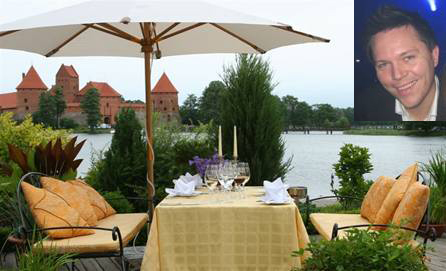
How can a fantastic place like Vilnius with its 500,000 plus inhabitants and Lithuania with its 3 million plus inhabitants have a smaller tourism budget than a mountain village in Norway of 450 people?
Text: Thomas Danielsen
I am sitting in Apvalaus Stalo Klubas (Round Table Club) in Trakai writing this article. It is a beautiful spring Sunday and the sun is shining from a clear blue sky. There are still some ice flakes left on the waters in front of the wonderful Trakai Castle. It is still too cold for sitting outside, but I have a fantastic window table overlooking the castle. There is a mix of tourists and locals inside the restaurant. On my right there is an old couple from Germany and to my left a young Lithuanian couple staring deep into each other’s eyes and holding hands.
As I am soaking in this wonderful and romantic atmosphere, I find myself filled with ambivalent feelings. I simply love this place and I have spent many hours looking at this castle. I am thinking how sad it is, that there are not more people who get to experience this unique ambience and this "one of a kind" view. My ambivalence goes towards the fact that the Lithuanian tourism sector - of which I have been a part of for 7 years - is suffering to such a great extent, while there are so many great experiences to be had here.
I think it is a paradox that a country with so many treasures within the "tourism sector" is haunted with such poor leadership. >From what I see (or do not see), the people in charge of Lithuanian tourism obviously have no idea what they are doing! They simply lack the understanding and knowledge of tourism as a product and as a concept! This, combined with no budget at all (yes, apparently, the tourism department has no budget for tourism marketing), goes to show the poor management and understanding of this important sector. After all, the tourism sector is in fact one of the biggest sectors IN THE WORLD, if not the biggest. This fact being neglected does not only sadden me, it scares the living daylights out of me!
The tourism marketing budget of Lithuania (not counting whatever money Lithuania receives from EU for such purposes) is 0 Euros, 0 Dollars and 0 Litas.
Now let me give you some food for thought:
For a period of 6 months from October 2009 to April 2010 I had a consulting job as destination director in a small mountain village in Norway called Hovden. Hovden is predominantly a winter destination and the tourism is mostly centred around one "small" mountaintop (1183m) with 5 large ski lifts and a lift capacity about 3000 people per hour. There are 3 hotels and 2 apartment hotels in addition a range of cottages, both for private use and rentals. This mountain community of 450 people has various challenges related to their situation, ranging from how to attract more tourists in the summer season, to socioeconomically challenges such as how to attract people to settle down here. During the winter season, this little mountain village explodes in the number of people living or coming here for shorter or longer stays (weekend breaks, seasonal workers etc). On the weekends between November and April the village grows into as many as 10 000 people. The local government realized decades ago that in order for them to simply survive as a community, they had to put their efforts into what they were given - a mountain suitable for skiing! This was in 1966-67. Now fast forward to present day - 2011. The realization that tourism is extremely important has turned this little spot "in the middle of nowhere" into a tourism paradise. And here is the punch line; this little spot called Hovden - hardly visible on a map - has an annual tourism budget of more than 1.1 million euro!
The question resounding in my head is this:
How can a fantastic place like Vilnius with its 500,000 plus inhabitants and Lithuania with its 3 million plus inhabitants have a smaller tourism budget than a mountain village in Norway of 450 people?
If any bright mind out there is now thinking "well, Norway is a very rich country and they can afford stuff like this", then I simply answer back that it is a known fact that in order to make money, you need to spend money! This is called marketing. And to further underline my point, I will give you a free 30-second lesson in business, economics and marketing:
If you spend money marketing Vilnius/Lithuania (mind you, based on a proper, professional strategy, branding and long term objectives!), you will get an increased inflow of tourists to the country. With increased flow of tourists, the bus companies transporting tourists will need more drivers to transport them from A to B. The hotels will need more staff in order to maintain a certain level of service. The restaurants and cafes will need more waiters to cater for the increase in clients. The guide companies will need more guides to show the tourist the city/country. The shops in Vilnius will need more staff to service the increase of customers. The spas will need more therapists to deal with the increase of clients. The airport will need more baggage handlers. All of these companies will eventually need more accountants and more administrators.
By now you should get my point!
But just to point out the obvious:
More tourists require more people to be hired in the tourism sector directly (travel agencies, bus companies, hotels), as well as in the various sectors benefitting from an increase of clients/tourists in general (like the retail sectors for example). With more people hired, unemployment will go down (a benefit for the society), tax payments from both private people and companies will go up (increased government revenue), restaurants will need more products from the farmers, bus companies will need more gas from the gas stations. The list goes on and on...
Despite the fact that this is an extremely simplified economic model, this is how the (macro) economy works. (Those geniuses who thought that increasing VAT on hotels from 5% to 21% would increase governmental revenues, need to buy a book called ABC of economics).
I am still sitting in the Round Table Club in Trakai. The old couple have left, but a bus full of Italian youths stopped by and took some photos, bought a take away pizza and some bottles of water and left. They were speaking very vividly about the castle, how beautiful it is and how amazing this place is. This is my point; Vilnius, Trakai and Lithuania excite people! They are willing to come to the country and SPEND MONEY, their hard earned cash, their disposable income (disposable income, Mr. tourism boss man, is the amount of income left to an individual after taxes have been paid, available for spending and saving"). This is really not rocket science! In order for people with disposable income to come and "dispose" of their cash in Lithuania, they need to know about Lithuania and Lithuania needs to be accessible (am I the only one who finds it strange that Lithuania does not have a national flag carrier?). Stop thinking that China is an important market for Lithuania tourism! It is NOT! How about focusing on the markets 1-2-3 hours away which coincidentally both share historic links with the region and has a culture for travel abroad and have high disposable income (No, not Russia, but Europe and Scandinavia)!
The paradox remains. A village in Norway of 450 people far outperforms Vilnius of 500,000 people and Lithuania of 3 million people by any measure!
As a final note I want to express that there is a distant light in the tunnel, a glimpse of hope with the new Mayor of Vilnius, Mr. Zuokas. Despite the different opinions about his previous periods as mayor, he seems to have some understanding of how "things work". And to his return to power, I wish to present him with a challenge. Mr. Zuokas, you have at your power the chance to create, what is in my opinion, the most interesting job in all Europe within the tourism sector. This is the position as Destination Director of Vilnius Tourism (Visit Vilnius, Vilnius Tourism Agency, Vilnius Convention Agency, Destination Vilnius or whatever you may choose to call it). The fact of the matter is that with the right team and a "slightly" higher budget than today, Vilnius and Lithuania could change a lot. But please, should you take this challenge, do not hire any of your friends or whoever is willing to work for the lowest wage or someone corrupt! Hire someone with the proper knowhow, intelligence, experience and motivation. And please, do give him/her a budget with clear goals, clear expectations and clear requirements. You are free to give me a call! The editor has my number!
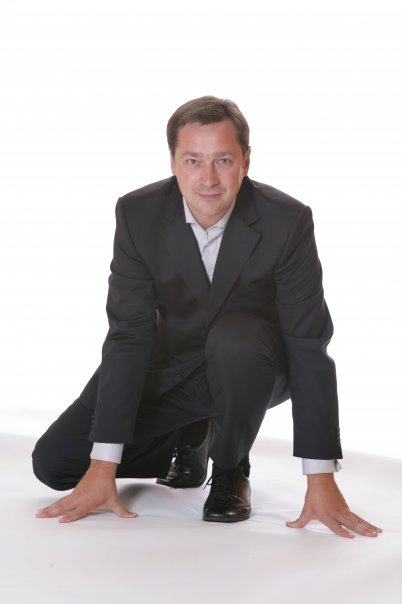
I want to express that there is a distant light in the tunnel, a glimpse of hope with the new Mayor of Vilnius, Arturas Zuokas. Despite the different opinions about his previous periods as mayor, he seems to have some understanding of how "things work".
- Bookmark :
- Digg
- del.icio.us
- Stumbleupon
- Redit it
Praise for Lithuanian railways
- Posted by - (1) Comment
Despite dire warnings from local Lithuanians and diaspora visitors, I courageously decided to travel from Vilnius to Warsaw and back on Lithuanian Railways, this Easter.
It was a great experience. Firstly, Vilnius railway station is very pleasant. The information and booking staff were extremely friendly and efficient. The booking agency staff in particular were very nicely uniformed and charming. I was booked in 2nd Class from Vilnius to Sestokai. The train left right on time, and whilst the train itself was not new, it was very clean and well maintained. The crew on board were friendly , very well dressed, and informative. The seats were comfortable. The journey allowed me to see the awakening spring of the Lithuanian countryside. Farms, farm animals, farmers ploughing fields a picture unseen by airline passengers. In the forests, the deep green of fir and pine trees were pleasing to the eye. I was so lucky to see a few deer, and amazingly a fox. Many of the farms were blessed with stork nests, and storks.
On arrival at Sestokai, we were transfered to Polish Railways service to Warsaw. Polish Railways was also good.
The return from Sestokai to Vilnius, was as pleasant as the forward journey. I would like to thank Lithuanian Railways for a safe and memorable journey.
As we all know, great service, efficiency and friendliness starts from the top. Therefore Congratulations to Mr. Stasys Dailydka, the Director General of Lithuanian Railways and his team for presenting such a fine product to the travelling public, especially foreign tourists.
Balys Stankunavicius
Vilnius – Melbourne
- Bookmark :
- Digg
- del.icio.us
- Stumbleupon
- Redit it
Birutė Hill in Palanga
- Posted by - (3) Comment
A place of Lithuanian history, legend, mythology culture and worship
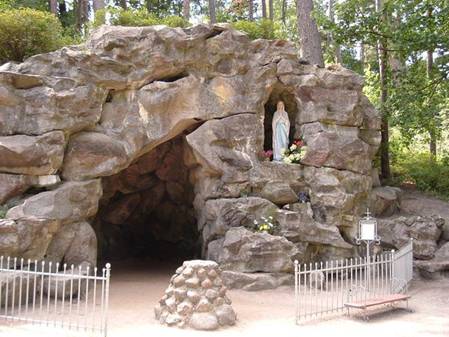
In as late as 1965 a sculpture called “For you Berutė” was set on the base of the hill. What gets your attention about the sculpture is not only that it was set here more than 550 years after her death but the name of the stature also is intriguing. The inscription on the sculpture reads in Lithuanian “Tau Birutė”. The word “tau” in Lithuania translates to “for you” but the Lithuanian language contains formal and informal nouns. “Tau” is informal. To say “for you” in the formal, you would say “jums”. What is quite striking and sheds light on how people nowadays feel about Bitutė is that by using the word „tau“ they are addressing her as a close friend. http://en.wikipedia.org/wiki/File:Palanga_Birutes_kalnas.jpg
When in Lithuania, it would be highly recommended that you visit the beautiful sea side resort area of Palanga. Any time of year it is a pleasure to walk to sandy beaches with the waves of the Baltic Sea gently splashing onto the shore on one side and pristine pine forests on the other. While you are there, you should also get some smoked fish offered by many of the vendors. They offer many varieties and the taste is simply out of this world. Aside from the maritime treasures Palanga has to offer you should also take some time to visit the Palanga Botanical Garden and Park. The park features a rose garden, greenhouse, rotunda, a sculpture of Eglė, the Queen of Serpents, a Holocaust memorial, ponds, and gazebos; during the summer it hosts concerts and festivals. While in the warmer months the Park and Garden offer a multitude of blossoming flowers, a visit during the dead of winter will still reward you with the peaceful grandeur this area has to offer.
In addition to the beauty of nature the Park has two other places of interest. One is the Amber Museum. This is definitely worth a look inside. It is positively fascinating to learn of all the different types and variations of amber (gintras in Lithuanian). As you leave the museum, take the path on the right side of the building. It will lead you to a place that is a combination of Lithuanian history, legend, mythology, culture and worship. It is called “Birutė Hill”.
To explain Birutė Hill we should start by telling who Birutė was. Birutė was the second wife of Kęstutis, Grand Duke of Lithuania and the mother of Vytautas the Great. There is very little known about Birutė's life but after her death, in 1382, a strong bond developed with this lady among Lithuanians, especially in the area of Samogitia (Latin)/Žemaitija (Lithuanian).
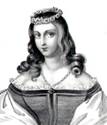
While no documentation has yet to be found to support this, it is generally believed that she was born near Palanga to a Samogitian or Curonian magnate family. The story of her marriage to Kęstutis is very romantic and has become a legend in Lithuania. It is documented in chronicles that Birutė was a priestess (vaidilutė) and had dedicated her life to serving the Pagan gods by guarding the sacred fire. Apparently this young lady was quite attractive and soon word spread near and far of a priestess in Palanga whose beauty was second to none in the universe. When Kęstutis heard of her beauty, he visited the area and asked her to marry him. She had to refuse because she had made a solemn promise the gods to guard her virginity until her death. Kęstutis, apparently being smitten by the charms of this fine lass had no intention of taking no for an answer. So basically what happened is once he figured out that all this sweet talk wasn’t going to work he took her by force to Trakai and threw a big wedding bash. End result is Birutė and Kęstutis had three sons and three daughters. Vytautas, their first son, was born around 1350 so this indicates suggests that the marriage took place around 1349 or a bit earlier.
Just as with her life, the exact circumstances surrounding Birutė's death are not entirely clear. Between 1381 and 1382 her husband Kęstutis waged a war against his nephew Jogaila, who would become the Grand Duke of Lithuania. Jogaila signed a treaty with the Teutonic Knights against Kęstutis. The result was that her husband was arrested and taken to Kreva Castle in the part of Lithuania which is now Belarus. A week later Kęstutis was dead and some chronicles hint that he was murdered. In one chronicle written by the Teutonic Knights, it is written that Birutė, for reasons of safety, was moved to Brest, Belarus, where she drowned in the autumn of 1382. Even after her passing the details of her death are still uncertain. Thirty-five years after her death, a Samogitian delegation to the Council of Constance denied she was murdered. It gets even more interesting in that a legend claimed that Birutė did not die in Brest. It claims that after her husband’s death she returned to the shrine where she had served earlier in Palanga, and resumed serving the gods until her death which in this case was in 1389.
Now that we have shared with you who Birutė was we can begin to explain Birutė Hill. Birutė Hill is the highest dune at the seaside resort of Palanga and now is a part of the Palanga Botanical Garden. Archaeological research shows that there was a village at the bottom of the hill in the 10th century. In the 13th century, when the Teutonic Knights and Livonian Order invaded, the villagers built a defense system with a tower. After an initial defeat, the system was rebuilt and made even stronger; it now had two towers and a wall surrounded the top of the hill. However, when this was burned in the second half of the 14th century, a pagan shrine and observatory was built in its place instead.
OK, so why is this dune, which is the highest in the Palanga area, called Birutė Hill you ask???
It is because legend has it that she was buried in Palanga at the bottom of this hill named in her honor. Some even say that it is at or near this hill that Kęstutis proposed matrimony to this lovely maiden. After her death, people began to come to this spot to pay tribute to this pagan princess. She was considered to be a goddess or the pagan equivalent of a saint by the local people. Since it was believed that she was buried somewhere at the base of this hill it is only logical that people would come here to worship her. In 1989 archaeologists found evidence of a pagan sanctuary and observatory, which had existed on the top of Birutė Hill in the late 14th or early 15th century. It was likely built in Birutė's honor.
The fact that in the late 1300s or early 1400s the people of this area would have built a pagan sanctuary in honor of this woman they believed to be a goddess or a pagan saint is really not surprising. At this period of time Christianity was still quite new to Lithuania. Yes, Mindaugas was Baptised in 1250/1251 but then in 1261 he reputed Christianity. It wasn’t until Jogaila was Baptised in 1386 that Lithuania really began to become a Christian State. From this point on Jogaila’s court and his knights, which included his cousin Vytautas (Birutės son), were also Baptised and the people of Lithuania followed the religious direction of their leaders. Beginning in 1413, Samogitia / Žemaitija was the last ethnic region of Lithuania to become Christianized. In November 1413, Vytautas himself sailed the Nehman and Dubysa Rivers to the village of Dubysa, which at that time was in the far western part of Samogitia and is now in the Kaunas region, where he baptised the first groups of Samogitians. In 1416, the construction of eight first parochial churches was started. The Diocese of Samogitia was established on 23 October 1417 and Matthias of Trakai became the first Bishop of Samogitia. The cathedral was built in Medininkai around 1464.
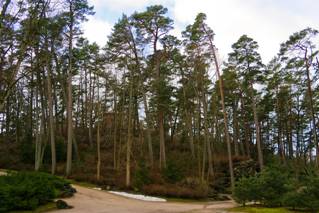
So in the early 1400s, the fact that people of the area were worshipping Birutė as a goddess could be considered understandable. However this is where it gets interesting and even to a degee mystifying though. The worshipping continued. The amount of worshippers of Birutė increased. Every year more and more people would come to the foot of the hill and pay their respects. This started to really become an uncomfortable issue in a country that was now considered to be a Christian country with Christian leaders. To discourage people from worshiping pagan gods and Birutė's grave or maybe just to make it look like the people were not worshipping a pagan goddess a chapel for Saint George was built on the top of the hill in 1506. In 1869 the chapel was re-built and to this day you can go to the top of Birutė Hill and visit the Chapel.
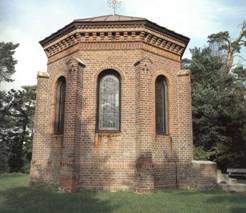
In spite of the Chapel and the concerns of the Church worshipping continued and the worshippers increased. In 1898 a Lourdes was built at the base of the hill. This photo of the Lourdes to Berutė was taken in September of 2010. As you can see from the prayer candles that are freshly lit, people to this day are visiting to pay their respects.
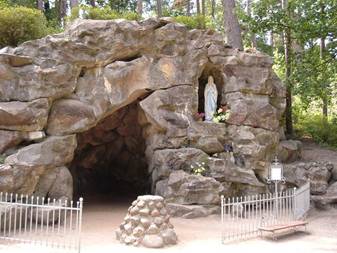
In as late as 1965 a sculpture called “For you Berutė” was set on the base of the hill. What gets your attention about the sculpture is not only that it was set here more than 550 years after her death but the name of the stature also is intriguing. The inscription on the sculpture reads in Lithuanian “Tau Birutė”. The word “tau” in Lithuania translates to “for you” but the Lithuanian language contains formal and informal nouns. “Tau” is informal. To say “for you” in the formal, you would say “jums”. What is quite striking and sheds light on how people nowadays feel about Bitutė is that by using the word „tau“ they are addressing her as a close friend.
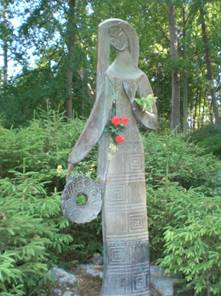
The next time you are in Lithuania it would be well worth you time to go to Palanga. Explore the sandy beaches, stroll through the pine forests. I don‘t know what it is about the pine trees in Palanga but the sweet smell that they transmit is wonderfully strong and permiates the area in such a way that almost lifts you off your feet and floats you through the natural beauty of this seaside land of natural treasures. Absoulutely do not forget to indulge yourself on what is most likely some of the finest smoked fish you will find any where on this earth. You would also do well to make some time to experience Birutė Hill. When you go there you will more than likely see freshly lit prayer candles and observe people paying their respects to Birutė. As you watch these “worshippers” you may ask yourself are they paying their respects to the wife of Grand Duke Kęstutis, the mother of Vytautas the Great or the pagan princess guardian of the sacred fire. I guess the only way to know would be to ask but to interupt while some one is offering a message from their heart would be quite disrespectfull therefore I guess we will never know.
Su pagarbe
Vin Karnila
- Bookmark :
- Digg
- del.icio.us
- Stumbleupon
- Redit it
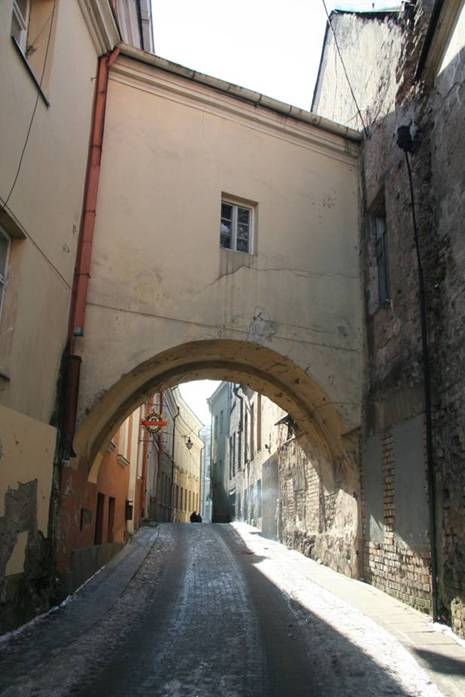
Vilnius Old Town
You can and should visit Lithuania for a lot of reasons this year – as you can see from our below survey. Common for all the 30 ideas mentioned, is that here you get top quality and tons of experience – for half the price – if to compare with most West-European countries.
We do, however, recommend you to plan your trip thoroughly, well in advance.
If you wish, we can help you to put together the most perfect programme for your trip, and give you some hints about how to get here, where to stay, with whom to deal and much more...
If this would be of interest for you, please do not hesitate to write us at editor@VilNews.com
Let us know some details about the main wishes you have for your visit to Lithuania, what to see, what to do, when you plan to come, and so on...
|
A – NATURALLY Nature has been generous to Lithuania. Although there are no mountains or big forests, the country's beauty lies in the diversity of its landscape. This is a place of rolling hills and gentle plains; of quietly flowing rivers and of lakes which reflect the blueness of the sky. |
|||||||
|
|
|
|
|||||
|
B – MUST SEES Vilnius Old Town has a stunning array of Baroque and Gothic architecture, a truly amazing place to visit and experience. It's also in Vilnius centre that you find the KGB Museum, a reminder of the gruesome Soviet oppression this country was forced to live with for 50 sad years. But only 30 km from the city, there is a strong medieval symbol of the 500 years of glory, when Lithuania was a leading superpower of world format. |
|||||||
|
|
|
|
|||||
|
|
|
|
|||||
|
C – CULTURE Far too few people outside Lithuania know what a tremendous treasure of culture this country represents! Today Lithuanian art is not only flourishing at home but is also gaining recognition internationally. Though not every poster tells that a nightingale soprano, a graceful ballerina, or a divine cello player comes from Lithuania, the probability that you have just enjoyed a concert of a Lithuanian artist is great, whether it be New York, London, Berlin, or Vilnius. |
|||||||
|
|
|
|
|||||
|
D – HEALTH & WELLBEING Many people come to Lithuania for quality health care of various kinds. Medical quality here is very high and prices for services very low... In addition the country has a number of extremely good spa and tourism resorts where visitors can undergo all kinds of treatments or simply relax and charge their batteries... |
|||||||
|
|
|
|
|||||
|
E – SPORT, OUTDOOR LIFE & PHYSICAL ACTIVITIES This year's EuroBasket tournament takes place in Lithuania (Aug-Sep). But Lithuania has also numerous other sport activities and events to offer, all year around. The Lithuanian lakes and rivers are full of fish, and the forests full of wild animals including deer, wild bears, beavers, elks and many others. One is allowed to hunt elks, wild bears, wolves, foxes, hares and birds, such as geese, ducks and woodcocks. |
|||||||
|
|
|
|
|||||
|
|
|
|
|||||
|
F - JUST FOR FUN Wondering what to do in Lithuania? We can help you stay busy, don't worry... We can tell you about the most popular tourist attractions, beaches, outdoor/indoor activities, nightlife and much, much more... |
|||||||
|
|
|
|
|||||
|
G – WINING & DINING The natural and healthy character of its dishes is what makes Lithuanian cuisine unique. There are all kinds of restaurants in absolutely all corners of the country – international and local dining and wining from Nida to Druskininkai, from coast to inland, not to forget the big cities... |
|||||||
|
|
|
|
|||||
|
H – HOTELS, CONFERENCES Lithuanian hotels offer a large variety of accommodation options. Though the country has undergone vast economic development, it also retains ties with its nature loving, glorious pagan, countryside past. Did we mention conferences? Try Lithuania – fantastic quality, half the price! |
|||||||
|
|
|
|
|||||
|
Oops... We forgot to mention golf... As compensation we are ready help you finding the best offers from the country's top golf courses... OK? |
|
- Bookmark :
- Digg
- del.icio.us
- Stumbleupon
- Redit it
Lithuania is the place to visit in 2011!
- Posted by - (1) Comment
|
Text: Giedre Paliusytė
Lithuania is a beautiful country, situated at the western end of the East European Plain, on the endless white sand southern shores of the Baltic Sea. Though Lithuania is small. It is, for example, almost 148 times smaller than China and has only 3,5 million inhabitants – which is almost 444 times less than China. Still Lithuania has amazingly much to offer... Everything is possible here! You can spend your time actively or find a place to relax in untouched nature; choose from a plethora of cultural events, explore the cities-open air museums and much more! Why did I compare Lithuania to China? In 2010 Lithuania took part in the global exhibition Expo in China, Shanghai. Over 5 million people visited Lithuania’s Pavilion. For many of them it was the first acquaintance with this unknown, far away country which the exhibition visitors found definitely worth visiting! A hot air balloon was chosen as the symbol for Lithuania’s pavilion. Visitors of the exhibition were invited to take an impressive virtual flight... But Lithuania itself is nothing but hot air!

RECOMMENDED WEB PAGES ABOUT LITHUANIA: http://www.travel.lt/index.php?lang=2 http://en.wikipedia.org/wiki/Lithuania RECOMMENDED VIDEOS ABOUT LITHUANIA: http://www.youtube.com/watch?v=jkyANEiQrBs http://www.youtube.com/watch?v=hxSjew7ZEFA http://www.youtube.com/watch?v=Fm5lG6DmNxo |
|
Reasons to visit us in 2011? The European Basketball Championship 2011 will be held right here, In Lithuania!!!
For a large part of Lithuanians Basketball is more than a game, we can even hear people calling it our “second religion”. Lithuanians know how to support their teams and how to celebrate victories. If you are not sworn enemies with this a game, you probably know that one of the most important events for Lithuania this year will be the European Basketball Championship 2011. Lithuania will be hosting the European Basketball Championship for the second time in countries history - the first was a tumultuous 1939. Host cities will be Alytus, Klaipeda, Kaunas, Siauliai, Panevezys and Vilnius. First tickets will go trade in March 2011. For more information about the European Basketball Championship of 2011 please see FIBA EUROPE.
An independent republic in the middle of the city!
The (un)official Independence Day of Republic of Užupis is a celebration for everyone! Almost fourteen years ago a district of Vilnius Old Town Užupis started celebrating its Independence Day. This year on April 1st we will again be able to spend a day partying, observing and learning to make traditional handicrafts, exploring the district that has its own president, a constitution and is one of the coziest parts of Vilnius, the UNESCO-listed capital of Lithuania.
Užupis is often being compared to Montmartre in Paris, or Freetown Christiania in Copenhagen because of its artistic atmosphere, events and people who living and creating there.
International Hanseatic in Kaunas May 19th 22nd
From May 19 to 22 International Hanseatic days will rock the Kaunas city. Guests from about 100 cities in Europe will come to contribute to the feast and celebrate together. More than 100 different events will take place and all of them will all be for free!
Most Lithuanians are very much interested in their history old customs and traditions, they want to keep them and demonstrate them to their friends and guests from other countries on numerous occasions. For more information please see: http://www.hanzakaunas.lt/ |
|
|
||||||||||||||||||||||
VILNIUS – LITHUANIA’S VIBRANT CAPITAL

Vilnius is a city full of color, with a historic centre registered in the Cultural Heritage of UNESCO, and for a good reason. The countless Baroque churches, narrow cobblestone streets, impressive squares and some unusual sites such as the statue of Frank Zappa, a statue of a giant egg or of a mermaid, artistic districts, mysterious legends and true stories gives it the right to be called the most funky destination in Northern Europe!
Vilnius Old Town’s Pilies gatve (Tower St.), The street is filled with life, people and music year around!
The capital of Lithuania – Vilnius, is a place where history, culture and new tendencies in culture and politics can be felt. A medieval castle and the centre of the city and the remains of the defensive wall reminds us of the XIII century when pagan Lithuania had to withstand direct campaigns of Teutonic Knights. The Cathedral of Vilnius– is the main Roman Catholic Cathedral of Lithuania and also is the place where the movement for independence from the Soviet Union began in 1989. The Old Town of Vilnius is a World Heritage site where you can find architecture examples of Gothic, Renaissance, Baroque and Modern architecture. Lithuania is an Independent country since 2004 a member of European Union and NATO.

In 1994, the Old Town of Vilnius was included in UNESCO World Cultural Heritage. It is one of the largest (comprising around 360 ha) and most scenic old towns in Europe, founded by Grand Duke Gediminas in 1323 (you can see the last existing tower of the former fortress with his name on the hilltop at the street end).
Vilnius’ light-coloured manors and church towers remind one of the of the old rich Italian cities such as Rome and Florence. Vilnius is the most northward capital-city having inherited the architecture styles of the Mediterranean, and is sometimes referred to as the world’s most Italian city outside Italy.
Vilnius of the 14th and 17th centuries is considered the major European cultural and educational centre of Western civilisation that reached farthest into the East. The Old Town of the capital reflects the apogee of the city grandeur and beauty of this period, while the rapidly growing Vilnius of today, with its around 600,000 inhabitants, is found among the world’s 20 most remarkable cities - that should not be missed by any world traveller.
THE VILNIUS CHURCHES AND SHRINES – DON’T MISS THEM!
|
|
|
|
|
|
VILNIUS CHURCHES
Vilnius Cathedral (top), St. Anne’s and Bernardines’ Churches, St. Casimir’s Church, the Romanov Church,
The St. Peter and Paul Church, The Orthodox church of Holy Mother of God

The St. Peter and Paul Church, The Orthodox church of Holy Mother of God
Vilnius has been known as the city of churches since the Middle Ages, several dozen of them can be found in the Old Town alone. Almost every style of architecture can be found in the churches and shrines of many religions in the city: gothic, renaissance, baroque and classicism. The Cathedral of Vilnius (top picture), from which we invite you to start the tour, is the most important piece of 18th century classical architecture.
These are the churches and shrines you simply have to see while visiting Vilnius:
| - The Vilnius Cathedral - St. Anne's and Bernadines' Churches - The Church of St.Michael - The Orthodox Church of St. Paraskeva - Sts. John‘s Church - The Temple of God‘s Mercifulness - The Church of the Holy Spirit - The Great Vilnius Synagogue Place |
- The Evangelical Lutheran Church - The Church of St.Michael the Archangel - St. Casimir‘s Church - The Church of the Holy Trinity - The Church of the Holy Spirit - The Church of St. Teresa - The Gate of Dawn - The St. Peter and Paul Church |
LITHUANIAN SCIENCE, CULTURE AND MORE…
|
|
|
|
When Vilnius University (above) opened its doors in 1579 this became another strong manifestation of Lithuania’s strong position as a leading nation for fine intellectualism in Eastern and Central Europe. Vilnius University is the oldest and largest Lithuanian higher education institution, an active participant in international scientific and academic activities and boasts many prominent scientists, professors and graduates. Let the amazing University Library be your starting point for a study of Lithuania’s many roles within science and intellectual development fields… |
Eimuntas Nekrosius is one of the best theatre directors in Lithuania. I Chose him to represent countries rich cultural life. I believe you will be surprised seeing what a variety this country has to offer – with several well-known professional symphonic and chamber orchestras, choirs, opera singers, ballet dancers and artists within many fields. Cultural events take place all year around; marvellous summer festivals of classical music, theatre, cinema and poetry performances by many Lithuanian and foreign artists, and much, much more. Lithuania is also widely known as a jazz country, famous for its several international jazz festivals organized by jazz performers and fans in several cities. |
TRAKAI – LITHUANIA’S MEDIEVAL CAPITAL

You can’t leave Lithuania without visiting Trakai! It is located in one of Lithuania’s picturesque lake districts, just 30 km from Vilnius. Trakai was the administrative, economic and defensive centre of the Grand Duchy of Lithuania at the beginning of the 14th c. The majestic Gothic castle on an island on Galve Lake is the only castle surrounded by water in Eastern and Central Europe. Inside the castle, there is the Trakai Historic Museum where visitors can see old armament collections as well as other historic exhibits. Also worthwhile seeing is the Karaim quarter with its restaurants originating from the Black Sea area!
DRUSKININKAI AND GRUTAS PARK (LENIN’S NEW HOME)
|
|
|
ABOVE LEFT: DRUSKININKAI IS LITHUANIA’S SPA CAPITAL
Druskininkai is Lithuania’s spa capital since the 19th century. This is the place you simply have to go to if you need any sort of treatment for your soul or body. Thousands of others, from around the globe, are already cured!
For more information see http://info.druskininkai.lt/



MEETING LENIN FACE-TO-FACE
The Grutas Park in Druskininkai includes statues of Lenin and many other Soviet leaders, all removed from their former official locations in the wake of Lithuania’s regained freedom in 1990 – 1991. We got them, didn’t we?
At the gate to Grutas Park you will be met by Soviet militiamen and soldiers. Well inside the park you will meet them face to face – the individuals Lithuanians and many around the world learned to hate for their cruel, gruesome behaviour to innocent people. You may also feel as if you are in a Siberian concentration camp in the section of the Park that is surrounded by a moat and barbed wire fences with watch-towers. The atmosphere of a Soviet canteen permeates
the park café where the food is served in metal bowls. The aluminium cutlery is a popular souvenir.
For more information see http://www.grutoparkas.lt/
KAUNAS – LITHUANIA’S PRE-WAR CAPITAL

Kaunas Old Town is an amazingly lively and attractive place to be. Have you been there?
Kaunas is the second largest city in Lithuania, with a population of around 415,000. Kaunas was founded in the 12th century and owes its existence to its favourable geographic position at the confluence of Lithuania’s two biggest rivers, the Nemunas and the Neris, 100 km from Vilnius and 200 km from the port city Klaipeda. Kaunas was the capital of Lithuania between 1st and 2nd World War, when Vilnius was occupied by Poland. Kaunas enjoys a remarkable Old Town which is a concentration of ancient architectural monuments: the remnants of the 13th century Castle, the Cathedral, the Jesuit and St. Trinity Churches as well as the Old Town Hall, nicknamed the "White Swan" for its charming architecture. The Old Town Hall Square, the most important architectural accent of the Old Town, is reminiscent of the Middle Ages with the early Gothic Vytautas Church and the late Gothic Perkunas House not far away. The Old Town squares and buildings of the surrounding streets are brisk with numerous restaurants, bars and cafes as well as art galleries and Lithuanian folk art souvenir shops, popular among tourists.
LITHUANIAN LANDSCAPES – NEMUNAS RIVER

Mingė often nicknamed Lithuanian Venice is a unique fishermen's village where the main "road" is the river!
Lithuania has a diverse landscape - three hilly uplands, and three lowlands plains. The highest point is Juozapine Hill, not far from Vilnius; it rises to 293.6 meters above sea level. There are over 4,000 lakes and 722 rivers in this country. The longest river is the Nemunas (above), which is 937 km long totally whereas its length through Lithuania is 457 km.
But these are only the hard facts. The Lithuanian countryside is so much more than just facts. It is only when you begin your walk through the woods here, as you slowly float down one of the rivers in a canoe or a raft, when you sit down at one of the many amazing lakes, or when you first put your foot down in the Baltic Sea’s salty water that you really understand that this country is different. It is now, in the year of 2010, that you will have the great opportunity of feeling close to Lithuania's highly inspirational nature. Why wait?
SIAULIAI – THE HILL OF CROSSES

The Hill of Crosses near Siauliai city in North Lithuania is a most unique historic site where, except for some intervals, people have been continuously building crosses since the 19th century, asking for celestial help or paying back for it.
Today, there are over 200,000 crosses that have been counted on the site including fine artefacts by local folk artists as well as plain wooden crosses. ]At the Hill of Crosses, one can also see pope John Paul’s II cross made by a Lithuanian folk artist and built during the pope’s visit to Lituania in 1993.
There is a place in Lithuania, which is named “Hill of croses”. Why this place is so popular? Because in one place here you can find thousand of croses. This hill is a symbol of faith. Every year here are coming a lot of people and leaving at least a small cross in token of hopes and dreams, which comes true.
PALANGA – THE LIVELY BALTIC SEA RESORT
You can be at the Baltic Sea’s most attractive beaches only a few minutes after landing at Palanga Airport!
 If you want to have a calm holiday at an empty beach, then don't expect to find this in Palanga during the mid-summer months. Here, the beaches are always crowded, even in the evenings. If you like crowds of vibrant people at the beach, music, rhythms, games; then Palanga is for you. Though, at the end of the summer and in September, when the weather is still summer-like, the beach is less crowded and you can enjoy a much calmer atmosphere.
If you want to have a calm holiday at an empty beach, then don't expect to find this in Palanga during the mid-summer months. Here, the beaches are always crowded, even in the evenings. If you like crowds of vibrant people at the beach, music, rhythms, games; then Palanga is for you. Though, at the end of the summer and in September, when the weather is still summer-like, the beach is less crowded and you can enjoy a much calmer atmosphere.
 There are, however, a lot of other beaches nearby that are much less crowded also during the summer months, if that would be more to your preference. After all, Lithuania has the very top beaches of the Baltic Sea and Nordic area, with around 100 km soft, white sand beaches, all around 50 m wide and with the clear blue sea waves constantly rolling softly in… Did I mention that the country is called Lithuania?
There are, however, a lot of other beaches nearby that are much less crowded also during the summer months, if that would be more to your preference. After all, Lithuania has the very top beaches of the Baltic Sea and Nordic area, with around 100 km soft, white sand beaches, all around 50 m wide and with the clear blue sea waves constantly rolling softly in… Did I mention that the country is called Lithuania?
KLAIPEDA – THE HANSEATIC SEAPORT CITY
 Klaipėda city (population around 200,000) is the northernmost ice-free port of the Baltic Sea; an outstandingly important sea port and commercial centre since the 13th century. The 1st of August 1252 is considered to be the date Klaipėda was founded. In 1257 the city was granted the Lübeck City Rights
Klaipėda city (population around 200,000) is the northernmost ice-free port of the Baltic Sea; an outstandingly important sea port and commercial centre since the 13th century. The 1st of August 1252 is considered to be the date Klaipėda was founded. In 1257 the city was granted the Lübeck City Rights
By its old architecture this seaport city is close to the Nordic Countries and Germany; the Hanseatic styles and league. Some of the buildings that have survived in the cosy Old Town have a pronounced Fachwerk style.
Klaipėda cherishes nice marine traditions; it has hosted the Sea Festival on the last weekend of July every year since 1934,
an event that includes a number of performances of artistic companies and craftsmen’s fairs. The festival attracts many participants and guests not only from Lithuania but from abroad, too. The Kopgalis Fort complex, built in the 19th century, houses the Maritime Museum with an attractive exposition of marine nature and the history of navigation. These unique structures also accommodate a rich Aquarium and a Dolphinarium hosting shows of trained dolphins and Californian sea lions, which attract many spectators.

THE CURONIAN SPIT AND NERINGA

The Curonian Spit (Neringa) is a long and narrow sand peninsula that separates the Curonian Lagoon from the Baltic Sea. This natural wonder, listed as a UNESCO World Heritage site, still exists today solely due to human efforts to counter the natural erosion process. The Neringa landscape is truly unique, dominated by picturesque sand dunes and pristine beaches. The area has a distinct ethnographic flavour, characterised by wooden fishermen cottages and the local
speciality of smoked fish. Those looking for a quiet seaside vacation in picturesque surroundings will most definitely not be disappointed.
The huge sand dunes of the Curonian spit are the largest in North Europe.
You reach them by ferry from Klaipeda (takes only 10 min).
NIDA – THE FORMER FISHERMEN’S VILLAGE
|
|
|
The Nida home of the German writer Thomas Mann, today the Thomas Mann Museum.
The quiet resort village of Nida is based at the Curonian Spit near the Kaliningrad border, less than one hour’s drive from Klaipeda. With a beautiful Baltic Sea beach on the west side, the large Curonian Lagoon on the east side and the largest sand dunes of Northern Europe on the southern side, this is a truly unique place for a relaxed vacation. You should spend one or two weeks in a self catering Fisherman's cottage or a few days in a guest house or hotel. Take it easy!
"I have never visited anywhere that had such a relaxing effect on me as the view from the sun clock on the Great Dune
in Nida. The silky-smooth lagoon to one side of the golden spit and the sparkling waves of the Baltic Sea to the other side was breath-takingly beautiful. We did lots of walking, running and cycling including a walk along the Baltic Sea beach from west of Preila back to Nida”.
- The Barrett Family
THE CURONIAN LAGOON

|
The Curonian Lagoon is separated from the Baltic Sea by the Curonian Spit. Its surface area is 1,619 square kilometres. The Nemunas River supplies about 90% of its inflows; its watershed consists of 100,450 square kilometres in Lithuania, Belarus, and the Kaliningrad Oblast. At the northern end of the Spit, there is a passage to the Baltic Sea, and the place was chosen by the Teutonic Knights in 1252 to found Memelburg castle and the city of Memel. The Lagoon, formed about 7,000 years BC, is classified as brackish. Water depths average is 3.8 meters. |
|
- Bookmark :
- Digg
- del.icio.us
- Stumbleupon
- Redit it
Recovery for Baltic tourism sector
- Posted by - (0) Comment
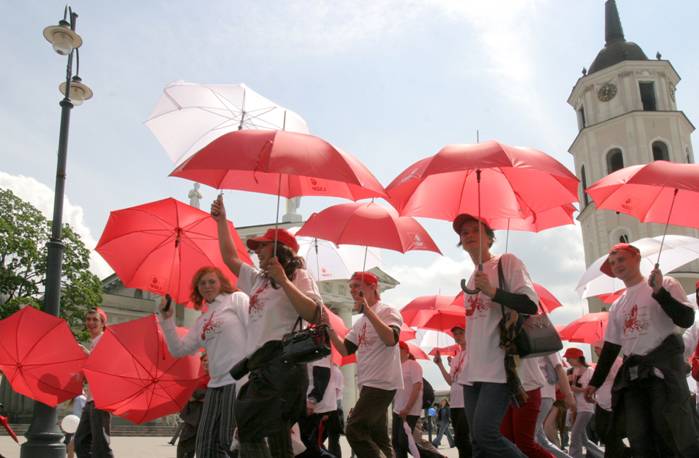
Carnival in Vilnius.
Photo: Lithuanian State Department of Tourism
- It was something of a recovery period for the Baltic tourism industry in 2010, following a challenging 2009. In all three Baltic countries tourist arrival numbers fell in 2009. Latvia welcomed the most tourists (4.72mn), with Lithuania and Estonia both attracting just over 4mn. Latvia's position as the cheapest tourist destination of the three Baltic countries helped it maintain tourist numbers slightly better than its neighbours during the period of global economic uncertainty in 2009. The decision by the Latvian parliament in May 2010 to reduce the VAT rate on hotel accommodation from 21% to 10% further underlines the country's attractiveness compared to its Baltic peers.
Looking at trends in 2010, all three countries reported higher hotel occupancy rates over the summer months, which bodes well for full-year tourist arrivals figures. We estimate growth in tourist arrivals of 3% for Estonia, 5% for Latvia and 2.5% for Lithuania in 2010. Looking ahead, we are positive about the outlook for all three countries, with a slight preference for Latvia's potential growth in the next five years. Estonia remains the largest tourism market in terms of tourist revenues, generating US$1.42bn in 2009. Lithuania was second with US$870mn, with Latvia in third on US$674mn.
We are upbeat about the outlook for the Baltic region. Cruise travel in the region is continuing to grow in popularity, with Tallinn's status as a European Capital of Culture in 2011 also likely to draw in tourists from across the continent. Riga will be a Capital of Culture city in 2014. Arrivals from Russia should also continue to grow strongly throughout our newly extended forecast period to 2015 as a result of rising disposable income and increased flight services between Russian cities and the Baltic region, most notably by airBaltic.
In BMI's updated Tourism Environment Business Ratings for 2011, the Baltic countries are towards the middle of the table: Estonia is in joint sixth place with Turkey, while Latvia and Lithuania are in joint eighth place. This partly reflects the still developing nature of the region's tourism industry compared to its peers across Central and Eastern European.
Note On Accommodation Data
BMI advises readers that the official number of accommodation establishments across the Baltic region has fluctuated wildly in recent years as a result of new builds and existing establishments choosing to register with government bodies and therefore becoming part of official data. This latter trend looks set to continue over the forecast period, which must be borne in mind when considering our projections through to 2015.
Estonian Air Back Under State Control
In May 2010, Scandinavian airline SAS Group announced that it wished to divest its 49% stake in Estonian Air as it concentrates on its home market. In September, a transaction was approved by the Estonian government, which provided EEK280mn via a rights issue to increase the airline's share capital. Following the rights issue, SAS saw its stake reduced to 10%, with the government now holding 90% of Estonian Air. According to SAS, the airline has an option to buy this 10% stake (and SAS has the option to sell the stake) at a 'fair market value' after four years. SAS has said it will continue commercial cooperation with the Estonian flag carrier.
Over January-August 2010, Estonian Air carried 383,271 passengers, down by 1.6% year-on-year (y-o-y). However, following a poor start to the year, there was a steady increase in passenger numbers in the last four months of this period, according to the airline.
Star Holidays Enters Bankruptcy
In October 2010, Lithuanian travel company Star Holidays (and its subsidiary Star1 Airlines) started bankruptcy proceedings. The company, which was only established in June 2009, had incurred debts reportedly in excess of LTL5mn by the time of its closure. The trigger for the bankruptcy was the decision by Dublin Airport in late September to detain Star1 Airways' only Boeing 737 aircraft following non-payment of aircraft leasing fees.
The collapse of the travel company was another blow to the Lithuanian aviation industry, which suffered the indignity of the former national flag carrier flyLAL going to the wall in early 2009. Star Holidays' failure also underlines the risks still prevalent across the global tourism industry as the world economy moves towards recovery.
For more information or to purchase this report, go to:
- www.fastmr.com/prod/94387_baltics_tourism_report ..
View more research from Business Monitor International at www.fastmr.com/catalog/publishers.aspx?pubid=101 ..
About Fast Market Research
Fast Market Research is an online aggregator and distributor of market research and business information. We represent the world's top research publishers and analysts and provide quick and easy access to the best competitive intelligence available.
For more information about these or related research reports, please visit our website at www.fastmr.com or call us at 1.800.844.8156.
|
Author: |
- Bookmark :
- Digg
- del.icio.us
- Stumbleupon
- Redit it
Druskininkai makes you feel special!
- Posted by - (0) Comment

 Druskininkai is the largest resort in Lithuania, located in the south of the country, 120 km from Vilnius and Kaunas. The resort is famous for its old sanatorium treatment traditions, wonderful nature and rapidly developing tourism services infrastructure. The resort has long been famous for its mineral waters and curative mud, which currently are combined with modern technologies and have a great value for health services. Druskininkai is the international resort for active recreation and treatment, which is aimed at the
Druskininkai is the largest resort in Lithuania, located in the south of the country, 120 km from Vilnius and Kaunas. The resort is famous for its old sanatorium treatment traditions, wonderful nature and rapidly developing tourism services infrastructure. The resort has long been famous for its mineral waters and curative mud, which currently are combined with modern technologies and have a great value for health services. Druskininkai is the international resort for active recreation and treatment, which is aimed at the  wide spectrum entertainment industry with its highly developed modern service infrastructure. The resort infrastructure is developed in these directions – sanatorium treatment, tourism, recreation, entertainment and commercial sporting activities. The wide range of available services is suitable for people of all ages.
wide spectrum entertainment industry with its highly developed modern service infrastructure. The resort infrastructure is developed in these directions – sanatorium treatment, tourism, recreation, entertainment and commercial sporting activities. The wide range of available services is suitable for people of all ages.

Visit Druskininkai and you will be convinced of the exceptional nature of this resort and its calm aura. You will sense a harmony of body and soul or maybe you will spend your time very lively in active entertainment.
Health improvement in Druskininkai is a source of energy and good mood. Enjoy your life, care of yourself and remember – you are always welcome in Druskininkai!!!
 Traditional treatment
Traditional treatment
Advantages for personal health in Druskininkai are mineral water, curing mud, and mild climatic conditions. These make this Southern Lithuania resort attractive to visitors and serve as a good background for sanative activity.
Drinking mineral water has positive effect on the mucous membrane of stomach and duodenum, reduces stomach acidity, stimulates bile formation, regulates gastro-intestinal motorics, exchange of electrolytes and hormones. When drinking or inhaling drinking mineral water, it causes variations in hormones, strengthens immune system.
Patients can drink mineral water of different mineralization and composition straight from the springs.
Druskininkai is rich in fields of therapeutic peat mud. It is the product of long decomposition of vegetative organisms with almost no exposure to oxygen taking place in low marshlands. Due to its physical, chemical and microbiological properties it is suitable for treatment with baths, applications and compresses.
 Climate is the third remedial factor of Druskininkai health resort. The town is surrounded by coniferous woods and waters. There are no industrial companies, heavy transport or any other kind of pollution round the town.
Climate is the third remedial factor of Druskininkai health resort. The town is surrounded by coniferous woods and waters. There are no industrial companies, heavy transport or any other kind of pollution round the town.
The key feature of pure air is negative (light) ions predominant in the air. The average temperature in summer is 18,2 °C, relative humidity is 45-59 %, while the average temperature in winter is 5 °C and relative humidity 85-90 %. Annual rainfall is about 600 mm, on a sunny day annually it amounts up to 200, southwest winds 2,9 m/s are dominating. It is the perfect background for treatment procedures, recreation and tourism.
 In a tradition of two hundred years, the recreational health resort of Druskininkai proved its potential to stop illnesses exacerbation and progress, to reduce the dangers of disability, and of resort to increase the general quality of life.
In a tradition of two hundred years, the recreational health resort of Druskininkai proved its potential to stop illnesses exacerbation and progress, to reduce the dangers of disability, and of resort to increase the general quality of life.
In 2003 Druskininkai resort was admitted to the International Climate Therapy and Hydro Therapy Association that unites about 60 members of various resorts in different countries worldwide.




 Health improvement treatment
Health improvement treatment
Physical and biological, and sometimes psychological conditions of the patient are actively affected in the resort. Promotion of an active and responsible for his own health person is one of the ways to propagate the health improvement effects of the resort here. Physical activity of people in various social and age groups is encouraged in order to satisfy their biological need for mobility.
The renewed infrastructure of the resort and warm attitudes of the personnel of health treatment centers attract more and more people from Lithuania and abroad successfully. Not only traditional treatment of illnesses is offered, but also the popular programmes for health strengthening, orientated on younger persons recreation and relax.
People from cities here are recovering in a few days time and are able to forget their everyday worries, stresses. They leave but come again because, they say, the pace of time in this beautiful place in Dzukija stops for them.
Besides, medicine specialists designed and supervised special programmes of different scope and intensity helping patients to loose weight, to relieve from the stresses, and to nurture their bodies.




Local places of interest
Druskininkai is situated in picturesque surroundings, encircled with interesting places to visit. Many places can be reached by riding on bicycle paths from the town center through the pine forests: the ethnographic Švendubrė village with a monument to nature – the Devil's Stone, and the legendary Raigardas Valley loved by M.K.Čiurlionis, the Museum of Soviet Sculptures "Grūto parkas", or just to see the Ratnyčia river as it meanders along its banks, and bath in its cascades. By bicycle you can reach the interesting surroundings of Latežeris and, along the way, visit the country house of the folk artist A.Česnulis (Naujasodės village). New bicycle and pedestrian paths are planned to Viečiūnai and Liškiava.
 An excursion by boat will take you to Liškiava to visit a mound with the remains of the 15th century castle tower, late baroque church and the Dominican monastery. We invite you to visit the Dzukija National Park, where you can see Dzukija's natural beauty and the local architecture, business and customs of the local inhabitants and sample the traditional food.
An excursion by boat will take you to Liškiava to visit a mound with the remains of the 15th century castle tower, late baroque church and the Dominican monastery. We invite you to visit the Dzukija National Park, where you can see Dzukija's natural beauty and the local architecture, business and customs of the local inhabitants and sample the traditional food.
In the picturesque city centre, new tennis courts have been opened for those who enjoy physical recreation.
The Raigardas landscape reserve
The Raigardas valley is a picturesque landscape valley located 9 km from Druskininkai on the road to Gardinas. There are many legends and folk stories about Raigardas. Supposedly, very long ago there was a great city, which was later swallowed up by the earth. From time immemorial it is considered that the slopes of the Raigardas trough together with the pine trees growing on the high and dry slope sink to the springy abyss. The valley has been growing every year. The name Raigardas came from old times, then a city in Lithuanian was called "gardas" and swamps – "raja". From these two ancient words the name Raigardas was coined. The Raigardas valley has been declared a landscape reserve. There are wide meadows with dunes and washes in the bed of the valley. The Raigardas Valley is protected as a rare landscape form. It was formed relatively recently (5000 years ago) and is still forming now. At the foot of the slope there are watery springs, which is the reason why the slope is still on the move.
Švendubrė
Švendubrė is one of villages located in the Druskininkai forests near the Raigardas valley, 5 km from Druskininkai. It is an old street village, which has been declared an architectural monument of local importance. Especially interesting are the old dzukish homesteads with distinctive fenced yards. Around the village in an area of 20 sq km there are meadow seams with streams. Where the Nemunykštis river falls into the Nemunas river, there is a steep hill called the Black Mountain. In olden times it could have served as a defensive point. From the top of the hill there is a beautiful panorama: the blue waters of the Nemunas river, the Raigardas valley, covered with green carpet of grass. In the  distance you can see the Užubalis hill, overgrown with pine trees and bushes. Supposedly, in ancient times a small wooden castle could have stood here, surrounded by swamps and bushes. To the north of the village there is a geological monument – the Švendubrė Stone, mentioned in many legends and folk stories.
distance you can see the Užubalis hill, overgrown with pine trees and bushes. Supposedly, in ancient times a small wooden castle could have stood here, surrounded by swamps and bushes. To the north of the village there is a geological monument – the Švendubrė Stone, mentioned in many legends and folk stories.
 Liškiava
Liškiava
Liškiava is mentioned in historical sources since 1044. Liškiava is located on the astonishingly beautiful left bank of the Nemunas river, 8 km from Druskininkai. People have lived in the Liškiava area since the second millennium BC. Liškiava has 4 archeological monuments: the Alka mound, the Church hill, a stone with a bull's heel and the so called "the stone of witches".
 Liškiava is famous for its architectural monuments: the 14-15th century castle, the remains of its tower, the 17th century sacral ensemble (church, former Dominican monastery and outbuildings), the 18th century churchyard fence, the steps to the chu
Liškiava is famous for its architectural monuments: the 14-15th century castle, the remains of its tower, the 17th century sacral ensemble (church, former Dominican monastery and outbuildings), the 18th century churchyard fence, the steps to the chu rchyard, the 19th century campanile, the memorial column with the sculpture of St.Agatha. Many works of art remain in the church from the 17th to 20th centuries. In the 6th century BC – 9th century AD there was a wooden castle on the mound. The wooden castle was built at the end of 14th century and the beginning of the 15th century and later abandoned after the battle of Grunwald (1410).
rchyard, the 19th century campanile, the memorial column with the sculpture of St.Agatha. Many works of art remain in the church from the 17th to 20th centuries. In the 6th century BC – 9th century AD there was a wooden castle on the mound. The wooden castle was built at the end of 14th century and the beginning of the 15th century and later abandoned after the battle of Grunwald (1410).
The Dzūkija National Park
The Dzūkija National Park is the largest national park in Lithuania, which occupies an area of 55,900 ha. The biologic diversity of the region, distinctiveness of flora and fauna made this territory an exception. Here you can find 147 kinds of flora and fauna written into the Red Book. There are many ethnographic and historical monuments and works of folk art in Naujasodė, Merkinė and Zervynos.
 Merkinė
Merkinė
Merkinė is one of the oldest Lithuanian towns, located in the junction of Nemunas and Neris, Merkinė was mentioned in 1377 in the Teutonic Order chronicles. It was the old capital of Dzūkija, encircled by beautiful landscape. It witnessed the Lithuanian battles with the Teutonic Order, old rulers of Lithuania and Poland and a stay of the Russian czar Peter I. An old tradition of black ceramics still lives in the neighborhoods of Merkinė. Many attractive ecological and ethnological tourist routes start here.
the Teutonic Order chronicles. It was the old capital of Dzūkija, encircled by beautiful landscape. It witnessed the Lithuanian battles with the Teutonic Order, old rulers of Lithuania and Poland and a stay of the Russian czar Peter I. An old tradition of black ceramics still lives in the neighborhoods of Merkinė. Many attractive ecological and ethnological tourist routes start here.
 Museum "Grūto parkas"
Museum "Grūto parkas"
In the shadows of pine and fir trees, soviet monuments whch were dismantled in 1989 are exhibited. This is a heritage of several decades of the Lithuanian monumental art. These idols were forced on the Lithuanian people in tragic  soviet era and reveal the historic truth about the soviet occupation of Lithuania. The exposition aims to show to the people of Lithuania, visiting guests as well as to the future generations, the naked soviet ideology, which oppressed and violated the spirit of our nation for several decades.
soviet era and reveal the historic truth about the soviet occupation of Lithuania. The exposition aims to show to the people of Lithuania, visiting guests as well as to the future generations, the naked soviet ideology, which oppressed and violated the spirit of our nation for several decades.
 The Town Museum of Druskininkai
The Town Museum of Druskininkai
The representational villa "Linksma" build in the beginning of 20th century, where the Town Museum is located, is a beautiful architectural monument located on the shores of the Druskonis lake, in the centre of the town. Since 2001, the museum has a permanent exposition, hosts events, shows, chamber music concerts and lectures. During the holiday season, the museum terrace hosts the traditional concerts "Serenades of Druskininkai" and other town events.
 The Memorial Museum of M.K.Čiurlionis
The Memorial Museum of M.K.Čiurlionis
The museum was established in 1963, in the house of the parents of the artist and composer Mikalojus Konstantinas Čiurlionis (1875-1911), where he lived and worked from 1896 to 1910. In two family houses the authentic life has been recreated. In the other two buildings there are expositions of the art, biography and family history of the artist. The museum has a reading hall, which collects works on M.K.Čiurlionis, hosts concerts, events, evenings and shows films. The various expositions are organized in one of the halls of the museum.
 V.K.Jonynas' Gallery
V.K.Jonynas' Gallery
The gallery was founded in 1993 m. The gallery exhibits the works of the Lithuanian artist Vytautas Kazimieras Jonynas (1907 – 1997), who worked for a long time in Germany and the USA, his drawings, graphics, paintings and stained-glass projects. Photographs and films show the most valuable interiors of churches and works of monumental architecture created by the artist.
The gallery hosts art exhibitions from the National Museum of M.K.Čiurlionis and private collections. For schoolchildren and kindergarteners art lessons are organised in the gallery which has 15 easels. Also projects with V.K.Jonynas art school are organised.
 Forest Museum "Girios Aidas"
Forest Museum "Girios Aidas"
The museum was established in 1971. It has expositions of animals and birds. Witches and other legendary characters are hiding in the hollows of oaks, birds are singing and the forest sighs.
The following exhibitions are organized:
- wood art works,
- jewelry works from amber,
- black ceramics works,
- works of folk artists,
- expositions of photographic masters,
- ethno cultural collections.
 At the end of 2006, an Aqua Park - the biggest and most modern in the Baltics - was be launched in Druskininkai. It offers a large variety of entertainments for both adults and children as well as a wide choice of relaxation procedures.
At the end of 2006, an Aqua Park - the biggest and most modern in the Baltics - was be launched in Druskininkai. It offers a large variety of entertainments for both adults and children as well as a wide choice of relaxation procedures.
Source: http://www.lithuanianhotels.com
- Bookmark :
- Digg
- del.icio.us
- Stumbleupon
- Redit it
For ladies only
- Posted by - (2) Comment
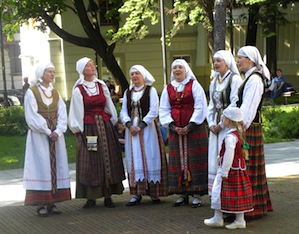
FIRST THE EUROPEAN WOMEN:
A big group of managers, all women, from Germany, Austria, Italy, Portugal and Switzerland are arriving for a seven day visit to Vilnius, Riga and Tallinn at the end of May. The tailor-made ‘Learning Baltic Tour’ encompasses a traditional tourism sightseeing programme, showing the female mangers some of the most beautiful European capital cities and landscapes. There will also be focus on Baltic culture, and the group will also meet local female managers to share experiences, and of course, to relax and have fun. The tour will provide excellent opportunities for networking and informal dinners, during which many topics concerning women of all countries.
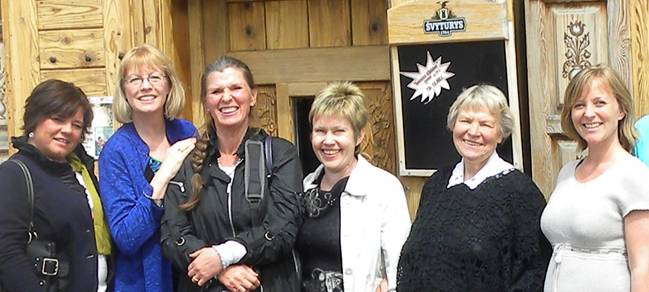
THEN THE AMERICANS:
There is no better time to experience northern Europe’s “best kept secret” than mid-summer. The weather is ideal, with generally perfect temperatures for enjoying the many outdoor musical and cultural activities that are celebrated all season long. Though having much in common, these three countries are distinguished by different language, history, ethnic origin, and cuisine. The capital cities of Vilnius, Riga and Tallinn, each with a unique character of cultural richness and beauty, have earned all three the designation as UNESCO World Cultural Heritage sites. Experiencing the rich heritage of this region will be the highlight of the tour for the US ladies. The tour will include several interesting gatherings with local women who have an inspiring story to share. Such opportunities never fail to add a unique dimension to the travel experience, and profoundly enhance our cultural appreciation for one another.
- Bookmark :
- Digg
- del.icio.us
- Stumbleupon
- Redit it
- Posted by - (1) Comment
Conferences and incentives
Lithuania is the southernmost and and the largest of the three Baltic States, with a range of attractions that appeal to even the most fastidious visitor. In recent years Lithuania has become a popular venue for business meetings, conferences and events. Only here it is so easy to combine a comfortable work and business atmosphere with joy of new discoveries and adventures.
The largest cities of Vilnius, Kaunas and Klaipėda are the most popular venues for international conferences and events. They offer the biggest choice of conferences facilities. Lithuania offers a variety of convenient convention hotels: from 14 international hotel chains to cosy private hotels with exclusive architecture and spirit. Most of the hotels have halls and rooms intended for conferences and meetings, business centers, all necessary equipment for teams servicing such events.
The importance and solemnity of special occasions or meetings of top-level participants is emphasized by the special location of the event. The historical premises, such as the Lithuanian National Philharmonic Hall, the Vilnius Town Hall, the Opera and Ballet Theatre, the Drama Theatre, the Palace of Grand Dukes of Lithuania, the grand Trakai Castle surrounded by lakes and situated just 30 km from Vilnius, are especially suitable for gala and exclusive occasions.
The Lithuanian resorts have become a new conference zone for smaller events offering to combine work and recreation for those who want to escape from the hustle of big cities and looking for more quiet surroundings:
Countryside farmsteads offering authentic atmosphere is also a good option for smaller events. Different outdoor activities are usually organized after the working hours.
Due to its specific relaxing atmosphere Palanga became the favourite place for organizing team-building workshops, seminars as well as important official meetings. This resort is often the venue for official or informal summit meetings of the leaders of Baltic and Northern countries.
Another seaside resort Nida and other settlements of Neringa are famous places for small conventions, seminars conferences or meetings attended by high-level politicians scientists and artists.
Recently it became quite popular to organize workshops, seminars or other events in Druskininkai and after the working day to relax and to take beauty or health improving procedures.
- Bookmark :
- Digg
- del.icio.us
- Stumbleupon
- Redit it
- Posted by - (0) Comment
VilNews section TRAVEL LITHUANIA!

This is our ultimate tourism guide that supports promotion of Lithuania and all that this country has to offer. Articles on a variety of topics, information about hotels, airlines, resorts, historic sites, events, museums, attractions and much more can be easily found here!
The main activities of the TRAVEL LITHUANIA Tourism section are the following:
Spreading knowledge about tourism services and destinations in Lithuania.
Informing about tourism investment opportunities Lithuania.
Fostering tourism relations with other countries.
Informing about tourism exhibits and fairs.
Fostering foreign media coverage of tourism in Lithuania.
Informing about workshops and meetings, conferences, seminars for professionals.
Planning to visit Lithuania? Here is some information for You:
Visa
Overseas residents must present valid documents on entering Lithuania; these include a passport and an entry visa. No visa is required for residents of the United States, Britain, the EU and residents of many other countries who enter Lithuania for less than 90 days in a 12-month period.
There are arrangements with some 20 other countries, whose citizens are eligible to receive a visa to Lithuania without being in possession of an invitation from a Lithuanian body. Nevertheless, the visa is granted after proof is provided of the ability to finance the period of the stay in Lithuania; normally around 40 dollars a day is required.
For more about visa and Residence Permits see: http://www.urm.lt
How do I get to Lithuania?
It’s very easy to reach Lithuania by car, ferry, railroad or by air. There are three international airports, all with good connections to Europe. The airports are located in Palanga, Kaunas and Vilnius.
A list of flights to Lithuania from popular destinations can be found here: flights
What language is spoken in Lithuania?
The official language in the country is Lithuanian which is said to be the most archaic of all the living Indo-European tongues. In tourist places and in bigger cities most people know English. Other languages that it may be possible to communicate in Lithuania are Russian, Polish; sometimes French, German.
Got interested and want to learn some Lithuanian? See: http://www.oneness.vu.lt/lt/
What currency is used in Lithuania?
Legislation on the controls of cash entering or leaving the EU apply in all Member States. Any person entering or leaving the EU will have to declare the money that they are carrying if this amounts to 10,000 euro or more (including cheques, travellers' cheques, money orders, etc.). This will not apply to anyone travelling via the EU to a non-EU country, as long as the original journey started outside of the EU, nor to those travelling within the EU.
The official currency of Lithuania is Litas (Lt). Major credit cards are widely accepted and ATM machines can be found in most banks and hotels. There are numerous currency exchange kiosks in the capital Vilnius and travellers' cheques can be cashed at some banks.
For more see: currency
What precautions should I take against muggers and robbers?
Petty crime, notably pickpocketing in bars and restaurants and especially in outside areas, is common. Take extra care of your belongings in busy, and particularly in outside, locations. Avoid carrying large quantities of cash. When confronted by a mugger or robber do not oppose resistance.
If you need to contact the emergency services in Lithuania call 112
- Bookmark :
- Digg
- del.icio.us
- Stumbleupon
- Redit it
VilNews e-magazine is published in Vilnius, Lithuania. Editor-in-Chief: Mr. Aage Myhre. Inquires to the editors: editor@VilNews.com.
Code of Ethics: See Section 2 – about VilNews. VilNews is not responsible for content on external links/web pages.
HOW TO ADVERTISE IN VILNEWS.
All content is copyrighted © 2011. UAB ‘VilNews’.

 Click on the buttons to open and read each of VilNews' 18 sub-sections
Click on the buttons to open and read each of VilNews' 18 sub-sections 






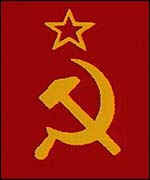
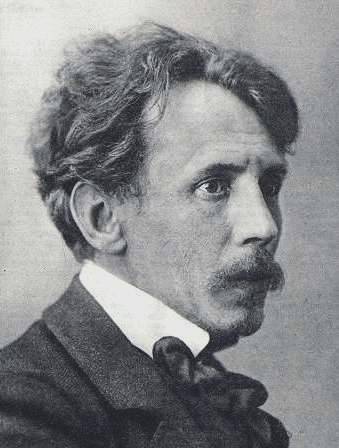
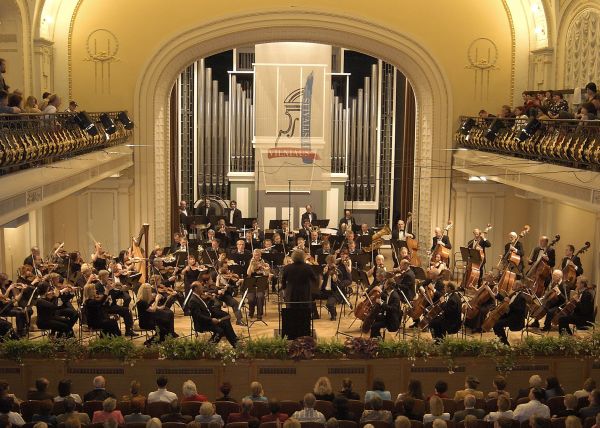
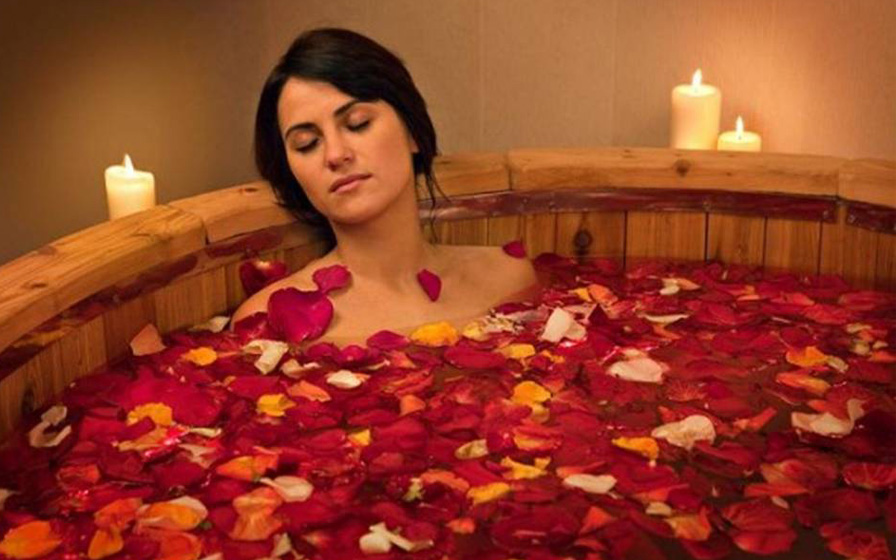

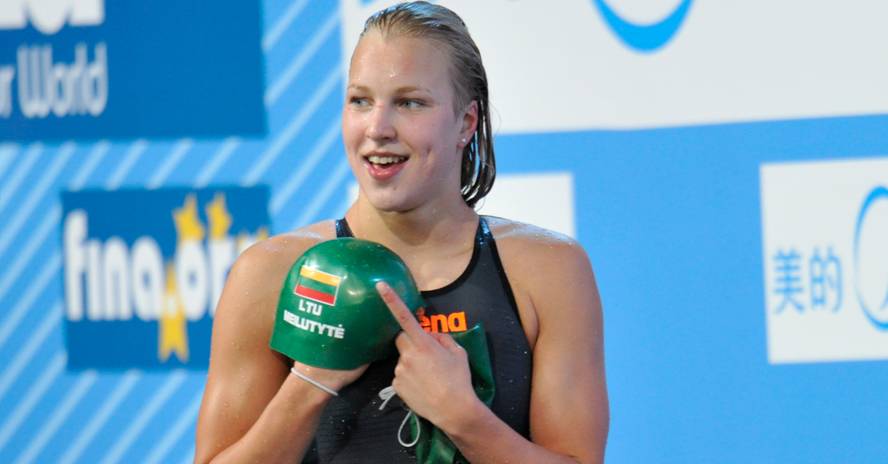































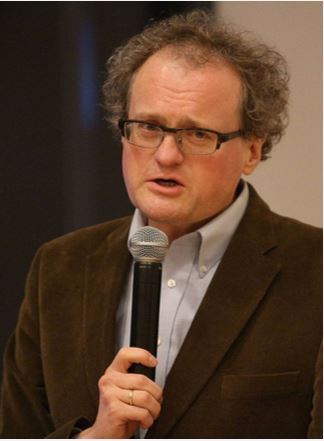
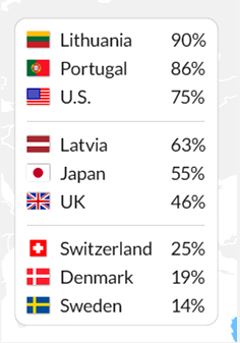
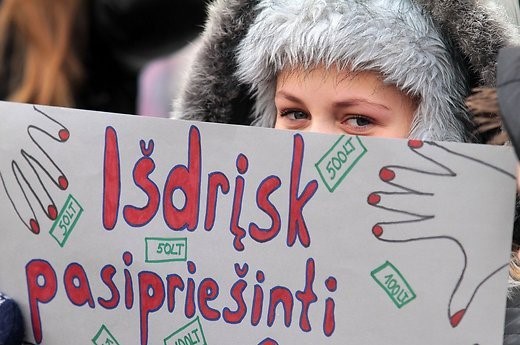


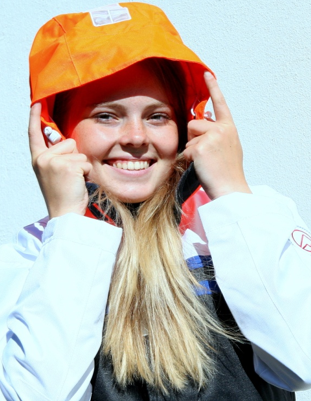
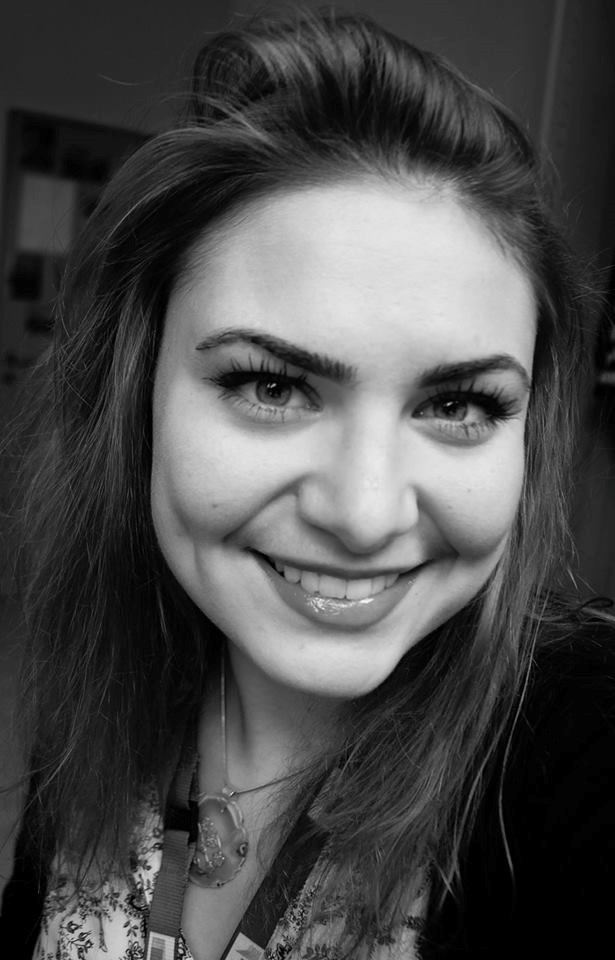
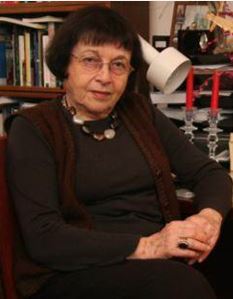
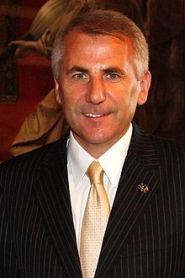
.jpg)
